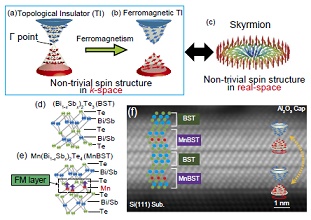Volume 65, Issue 9
Special Feature : Transactions of the Annual Meeting on the Japan Society of Vacuum and Surface Science 2021[III]
Displaying 1-10 of 10 articles from this issue
- |<
- <
- 1
- >
- >|
Preface
-
Article type: Preface
2022Volume 65Issue 9 Pages 387
Published: September 10, 2022
Released on J-STAGE: September 10, 2022
Download PDF (372K)
Special Feature : Transactions of the Annual Meeting on the Japan Society of Vacuum and Surface Science 2021[III]
-
Article type: Regular article
2022Volume 65Issue 9 Pages 388-393
Published: September 10, 2022
Released on J-STAGE: September 10, 2022
Download PDF (12839K) -
Article type: Current Topics
2022Volume 65Issue 9 Pages 394-399
Published: September 10, 2022
Released on J-STAGE: September 10, 2022
Download PDF (2234K) -
Article type: Current Topics
2022Volume 65Issue 9 Pages 400-404
Published: September 10, 2022
Released on J-STAGE: September 10, 2022
Download PDF (4565K) -
 Article type: Current Topics
Article type: Current Topics
2022Volume 65Issue 9 Pages 405-410
Published: September 10, 2022
Released on J-STAGE: September 10, 2022
Download PDF (1745K) -
Article type: Review
2022Volume 65Issue 9 Pages 411-416
Published: September 10, 2022
Released on J-STAGE: September 10, 2022
Download PDF (2184K)
Letter
-
Article type: Letter
2022Volume 65Issue 9 Pages 417-419
Published: September 10, 2022
Released on J-STAGE: September 10, 2022
Download PDF (1126K)
Current Topics
-
Article type: Current Topics
2022Volume 65Issue 9 Pages 420-425
Published: September 10, 2022
Released on J-STAGE: September 10, 2022
Download PDF (1516K)
Science Café
Diversity Promotion
-
Article type: Science Café
2022Volume 65Issue 9 Pages 426-427
Published: September 10, 2022
Released on J-STAGE: September 10, 2022
Download PDF (634K)
News & Trends
-
Article type: News & Trends
2022Volume 65Issue 9 Pages 428
Published: September 10, 2022
Released on J-STAGE: September 10, 2022
Download PDF (329K)
- |<
- <
- 1
- >
- >|







